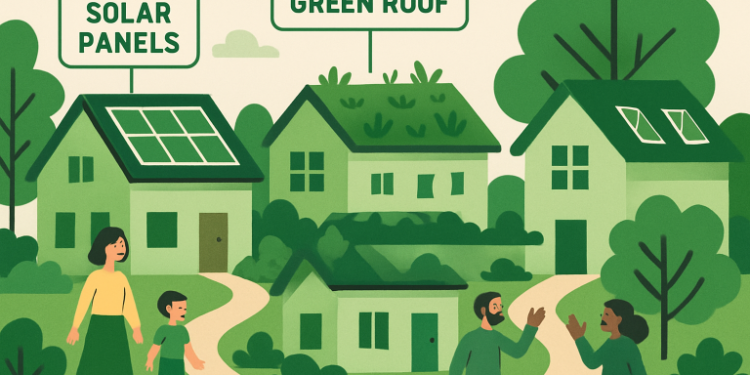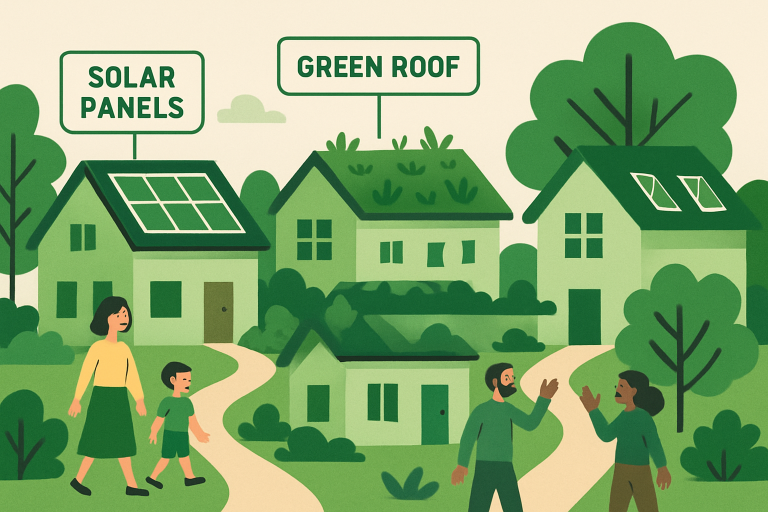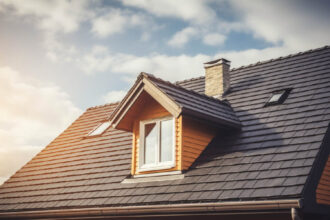Innovative Strategies for Sustainable Residential Development in the Modern Era

Table of Contents
- 1 The Rise of Sustainable Development in Housing
- 2 Core Principles of Sustainable Residential Projects
- 3 Design Innovations Shaping Neighborhoods
- 4 Smart Technologies and Energy Efficiency
- 5 Community Engagement and Social Impact
- 6 Balancing Affordability and Environmental Goals
- 7 Looking Ahead: What’s Next for Residential Development?
- 8 Building a Sustainable Future
The Rise of Sustainable Development in Housing
Residential development has reached a pivotal moment. Rapid urbanization and mounting environmental concerns demand a new approach—one that integrates innovation with responsibility. As cities expand and populations grow, sustainable development is no longer a fringe concept but a crucial strategy for long-term livability and resiliency. Leaders such as John Picerne have been instrumental in bringing sustainable principles to large-scale projects, demonstrating how forward-thinking real estate can align with environmental stewardship and community welfare.
Housing trends are transforming to address increased energy consumption, resource scarcity, and social well-being. Emerging best practices emphasize not just environmental responsibility but also the holistic health of communities. This modern lens reframes housing strategy to focus on reducing carbon footprints, fostering social ties, and creating long-lasting value for residents.
Pioneers in the industry are developing blueprints that prioritize energy efficiency, responsible land use, and innovative design. Recognizing the interconnectedness of individuals, neighborhoods, and nature, these strategies are reframing expectations for both single-family and multifamily developments.
A shift from short-term thinking to life-cycle planning is underway. Communities and developers alike are evaluating the consequences of decisions and investing in systems that offer both immediate and generational benefits—an approach that encourages healthier lifestyles and minimizes environmental impact.
Core Principles of Sustainable Residential Projects
Sustainable residential developments strike a balance among environmental, social, and economic factors. At the foundation of these projects lies a commitment to minimizing resource consumption. Strategies may include smart site selection that preserves natural habitats, energy-efficient building envelopes, and the use of locally-sourced or recycled materials.
Community integration is fundamental to the process. Developers collaborate with residents, planners, and local officials to ensure that new homes integrate seamlessly with existing ecosystems and meet the evolving needs of the population. Economic viability is also a critical component—sustainable projects are designed to be affordable, resilient, and adaptive to future growth, ensuring lasting success for both residents and investors.

Design Innovations Shaping Neighborhoods
Architectural ingenuity is at the heart of the evolution in sustainable housing. Green roofs, solar arrays, and wide-scale community gardens are redefining urban landscapes. Passive solar orientation and innovative building shapes reduce the need for artificial heating and cooling. Modular construction techniques offer cost savings and reduce construction waste, while rainwater harvesting and greywater systems decrease reliance on municipal water supplies.
These features do more than cut utility costs—they foster community spaces where residents can engage with nature and one another. Attractive, energy-efficient buildings draw people together, fostering a sense of belonging and enhancing both physical and mental well-being.
Smart Technologies and Energy Efficiency
The integration of smart home technology is transforming everyday life. Energy-efficient appliances and programmable thermostats are standard, while solar panels and battery storage allow for decentralized, renewable power generation. Advances in the Internet of Things (IoT) provide residents with real-time insights into their energy and water usage, empowering informed decisions that benefit both the environment and their wallets.
Smart grid connectivity and community power-sharing initiatives further extend the benefits of technology, lowering collective utility costs and reducing reliance on non-renewable energy sources. This tech-forward mindset also supports energy resilience—a pressing concern as climate-related disruptions become more common.
Community Engagement and Social Impact
Sustainable development thrives when residents feel they have a voice and a stake in their communities. Collaborative design processes involving neighborhood input and municipal guidance foster transparency and trust. Amenities such as shared green spaces, communal kitchens, and cooperative childcare hubs foster social connections and promote inclusivity.
Programs that promote participatory planning, local business support, and community events help transform neighborhoods into tight-knit, supportive environments. These efforts lead to lower crime rates, improved educational attainment, and greater resident satisfaction—evidence that sustainable design is as much about people as it is the planet.
Balancing Affordability and Environmental Goals
A significant challenge for sustainable residential development is ensuring affordability. Innovative design, new materials, and advanced technology can contribute to higher upfront costs. However, lifecycle cost analysis often reveals considerable savings from reduced energy, maintenance, and water consumption over the long term. Governments and financiers are responding with incentives, grants, and creative financing structures that enable wider access to sustainable homes, particularly in underserved markets.
Public-private partnerships and non-profit collaborations have been essential in expanding the reach of green housing. By leveraging resources and sharing expertise, regions can deliver quality, environmentally conscious homes at price points accessible to a broad demographic.
Looking Ahead: What’s Next for Residential Development?
The momentum toward sustainable housing is unmistakable. Market preferences are clearly shifting, and regulatory frameworks are embracing stricter guidelines for energy use, materials, and urban planning. As developers, policymakers, and residents align their objectives, the next era of residential construction promises to deliver healthier, smarter, and more connected neighborhoods. The value of comprehensive sustainability—demonstrated by leaders and exemplified in new communities—will define the future of living for generations to come.
Building a Sustainable Future
Sustainable development in housing is no longer just an ideal—it is becoming the standard for resilient, future-ready communities. By uniting innovative design, smart technologies, and community-centered planning, developers are proving that homes can be both environmentally responsible and socially enriching. While challenges such as affordability persist, collaborative efforts between the public and private sectors are steadily expanding access to green living. As this movement continues to gain momentum, sustainable housing is poised to shape not only where we live, but also how we live, fostering healthier, more connected, and more enduring communities for generations to come.






